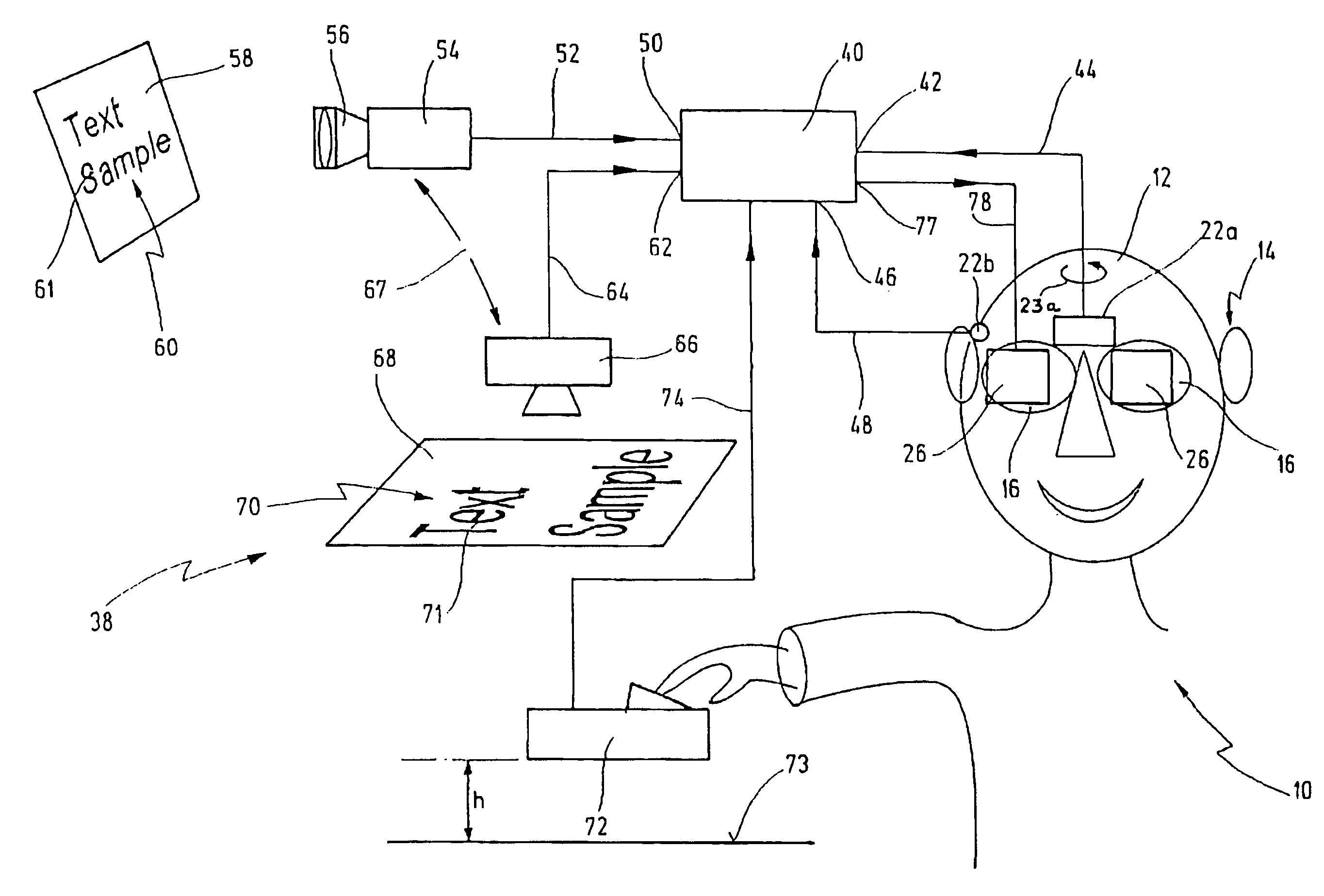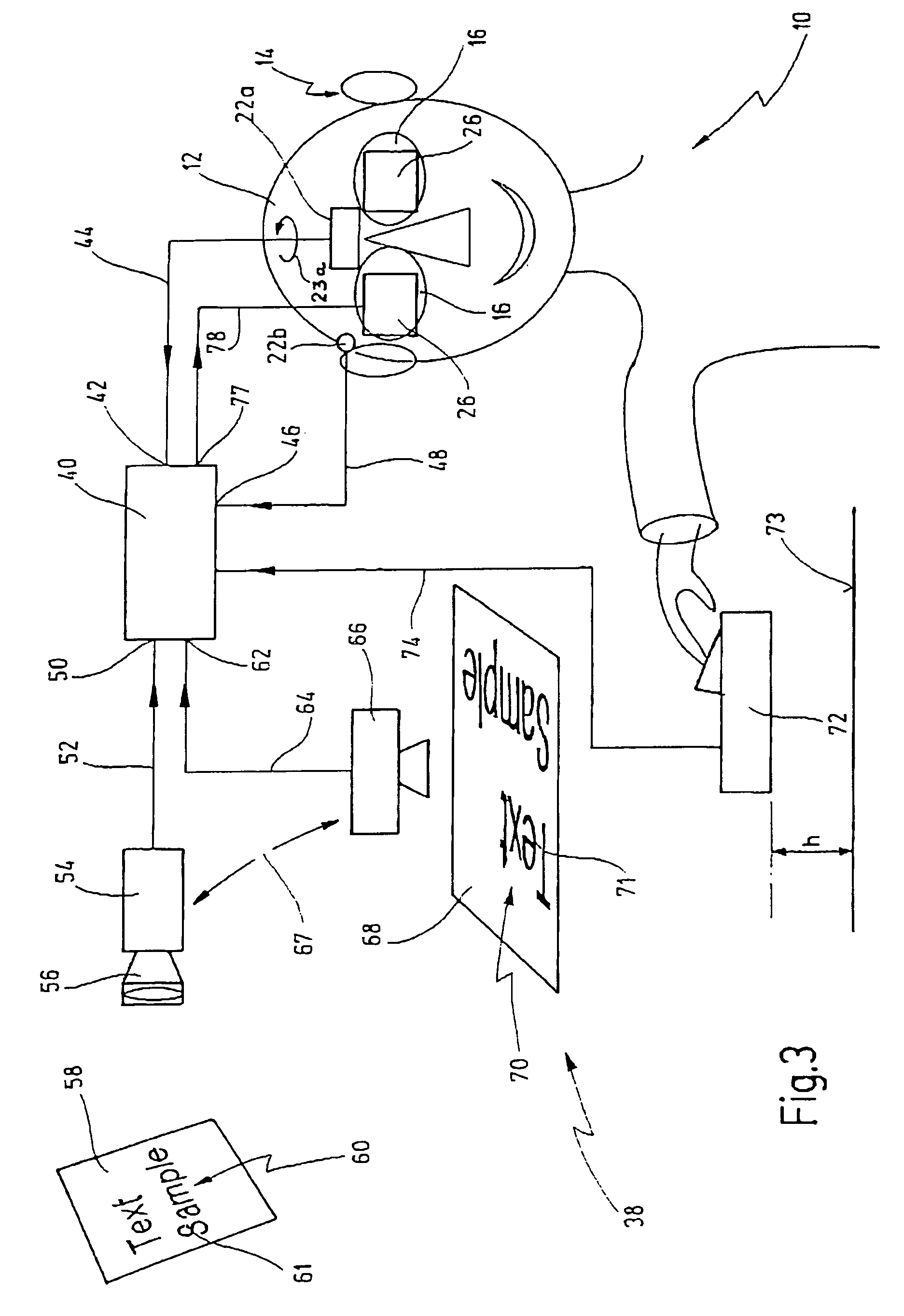Method for improving vision of a low-vision person and viewing aid
a technology for improving vision and low-vision persons, applied in the field of improving vision of low-vision persons and viewing aids, can solve problems such as poor vision, heavy weight of proposed systems, and even partial missed lines, and achieve the effect of improving vision
- Summary
- Abstract
- Description
- Claims
- Application Information
AI Technical Summary
Benefits of technology
Problems solved by technology
Method used
Image
Examples
Embodiment Construction
[0066]In FIGS. 1 and 3, reference numeral 10 indicates a low-vision person. For the described embodiment it shall be assumed that person 10 still has as much vision that he / she may orientate himself / herself roughly within his / her environment, however, that his / her vision is insufficient to properly perceive details, for example to read a text.
[0067]Person 10 at his / her head 12 carries a spectacle 14 with conventional optical lenses 16. Lenses 16 are optimized with respect to the aforementioned rough orientation of the person 10 within his / her environment. An eye of person 10 is indicated at 18 and the direction of vision or field of vision, respectively, is denoted as 20. In FIG. 1 spectacle 14 is used conventionally. Person 10 looks only through lenses 16.
[0068]In such a way, person 10 may move within his / her environment. If, for example, person 10 is at a train station, person 10 may be able to find his / her way. However, if he / she, for example, wishes to study a train schedule han...
PUM
 Login to View More
Login to View More Abstract
Description
Claims
Application Information
 Login to View More
Login to View More - R&D
- Intellectual Property
- Life Sciences
- Materials
- Tech Scout
- Unparalleled Data Quality
- Higher Quality Content
- 60% Fewer Hallucinations
Browse by: Latest US Patents, China's latest patents, Technical Efficacy Thesaurus, Application Domain, Technology Topic, Popular Technical Reports.
© 2025 PatSnap. All rights reserved.Legal|Privacy policy|Modern Slavery Act Transparency Statement|Sitemap|About US| Contact US: help@patsnap.com



